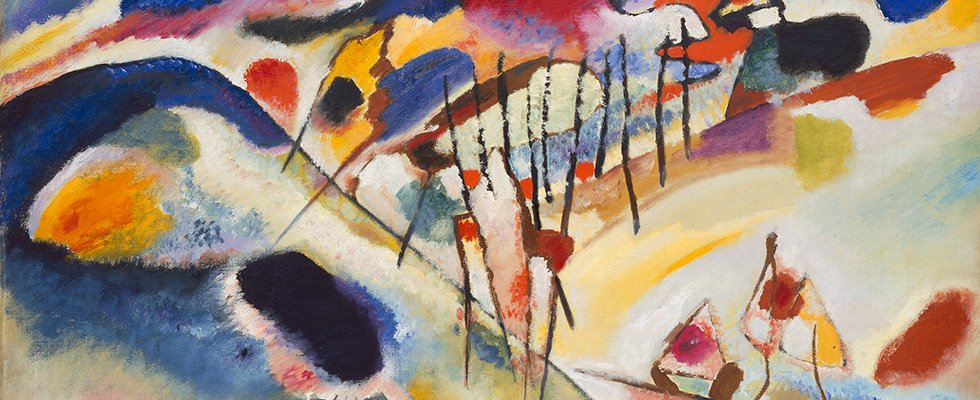Menu

Wassily Kandinsky, 'Landscape: Dünaberg near Murnau', 1913 (detail). The State Hermitage Museum, St Petersburg. Inv GE 9098. Photo © The State Hermitage Museum 2018, Vladimir Terebenin
Our colours were turning into sticks of dynamite...
they were primed to discharge light
– André Derain
It took sheer nerve to paint in this manner
and it took sheer nerve to buy it.
– Henri Matisse on his Shchukin commission, Dance and Music
An imaginary dialogue
A multimedia installation by renowned Saskia Boddeke and Peter Greenaway presents an imaginary dialogue between the artist Henri Matisse and the collector Sergey Shchukin around Matisse’s paintings ‘Dance’ and ‘Music’ in 1909–10. Both paintings were commissioned for the stairway in Shchukin’s Moscow residence and are now held in the Hermitage collection.
Using actors, animation and dance, the multi-screen video reinterprets the circumstances of this commission and its critical reception. It is a visual poem that evokes these two paintings, the relationship between Matisse and Shchukin and the period they lived in. The music was composed by the Italian composer Luca D’Alberto and reflects the sound conjured by the painting ‘Music’. The dance by the Spanish choreographer Juanjo Arqués is performed by dancers from the Dutch National Ballet.

Kandinsky: the Russian innovator
I wanted to make of impressionism something solid and enduring,
like the art in museums.
– Paul Cézanne
The visual phenomena of the objective world are, in themselves, meaningless;
the significant thing is feeling.
– Kazimir Malevich

